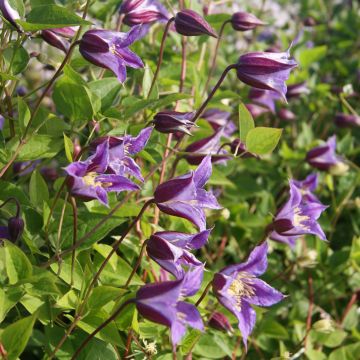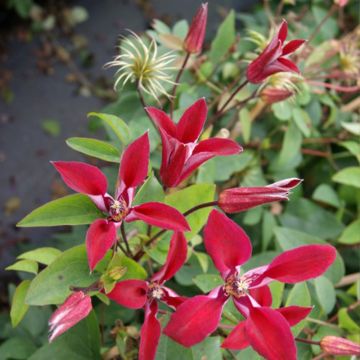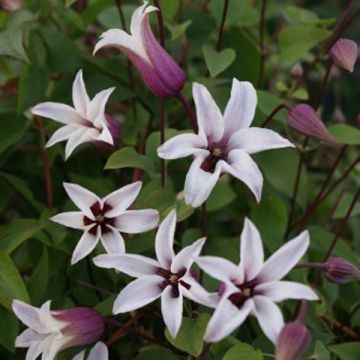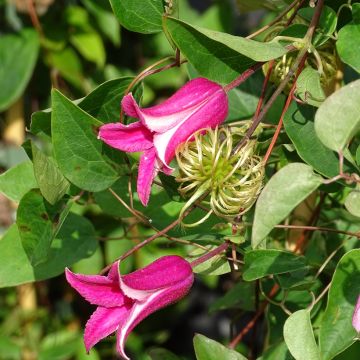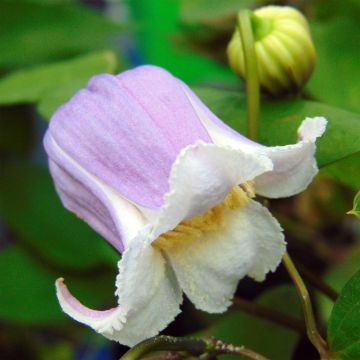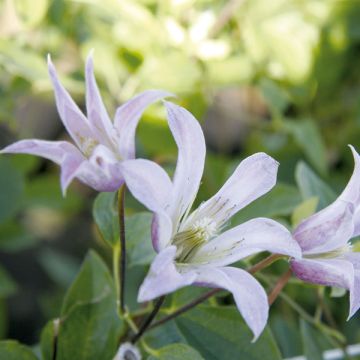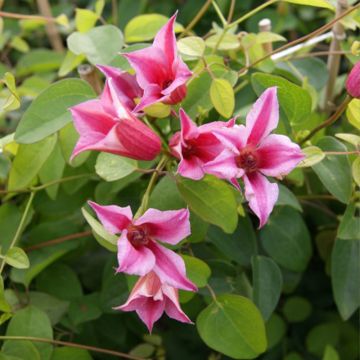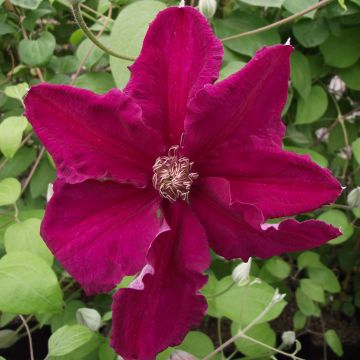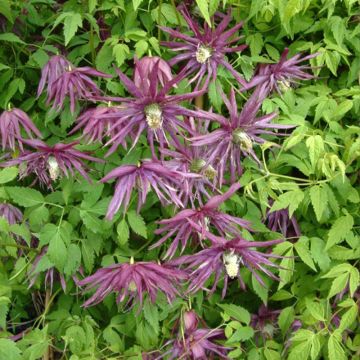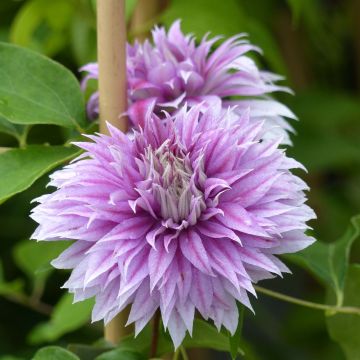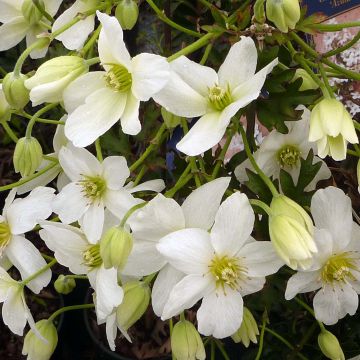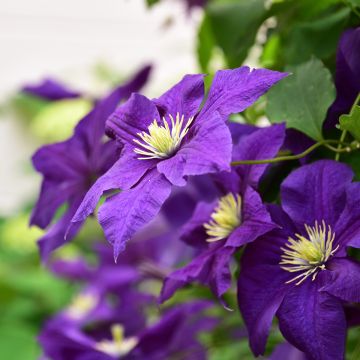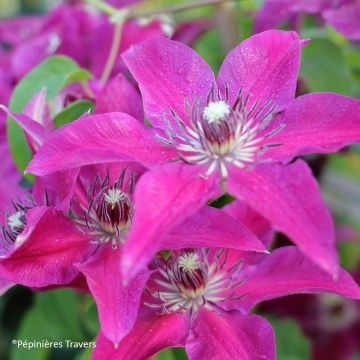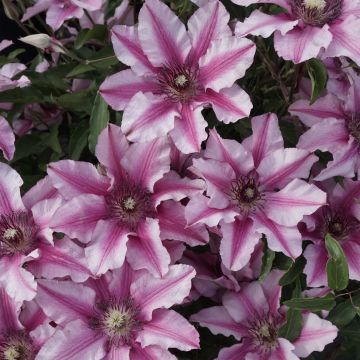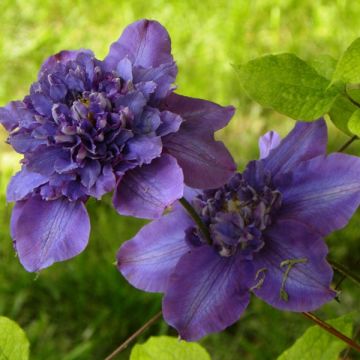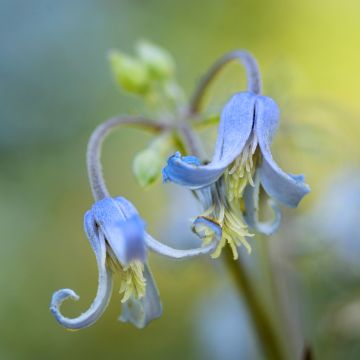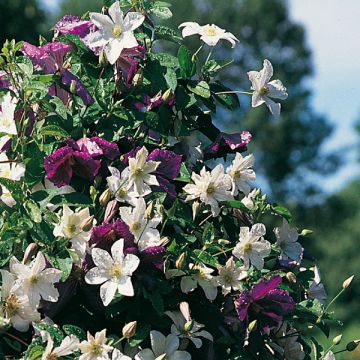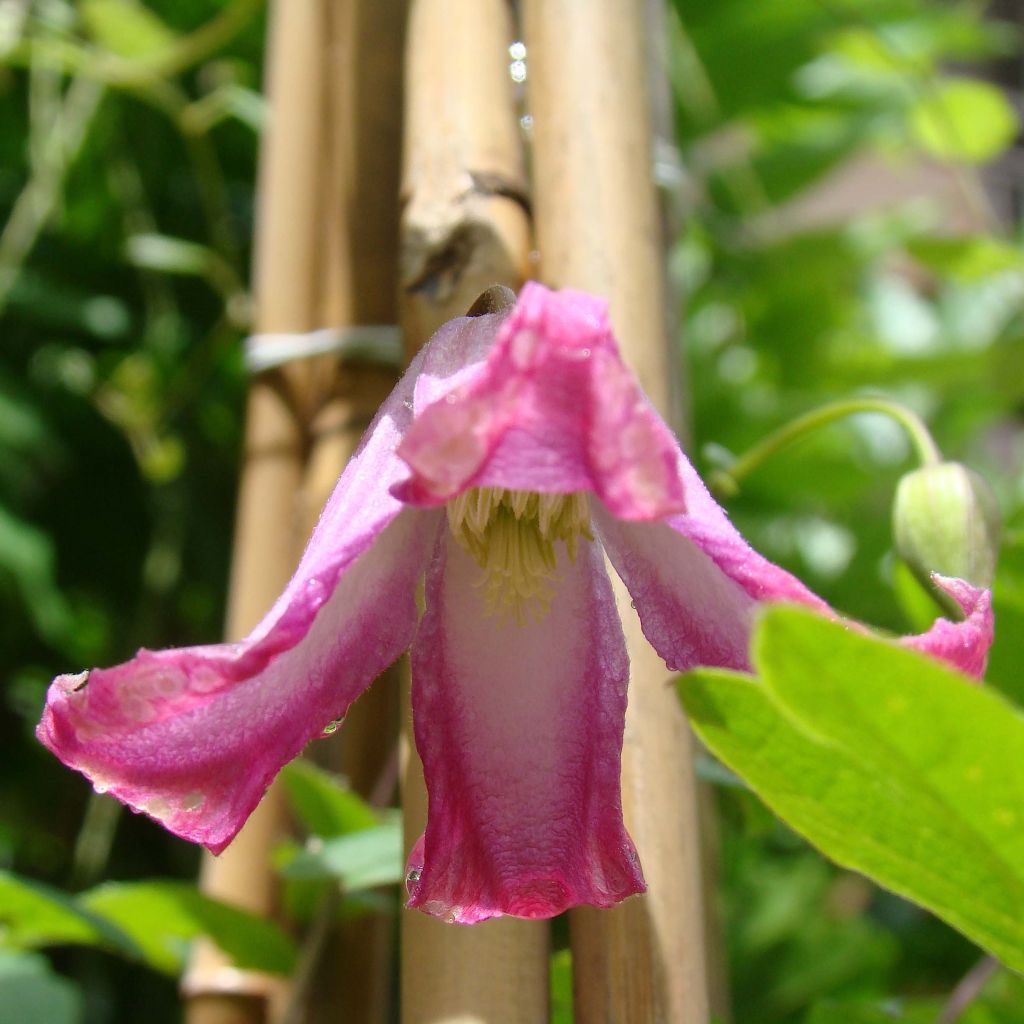

Clématite texensis Odoriba
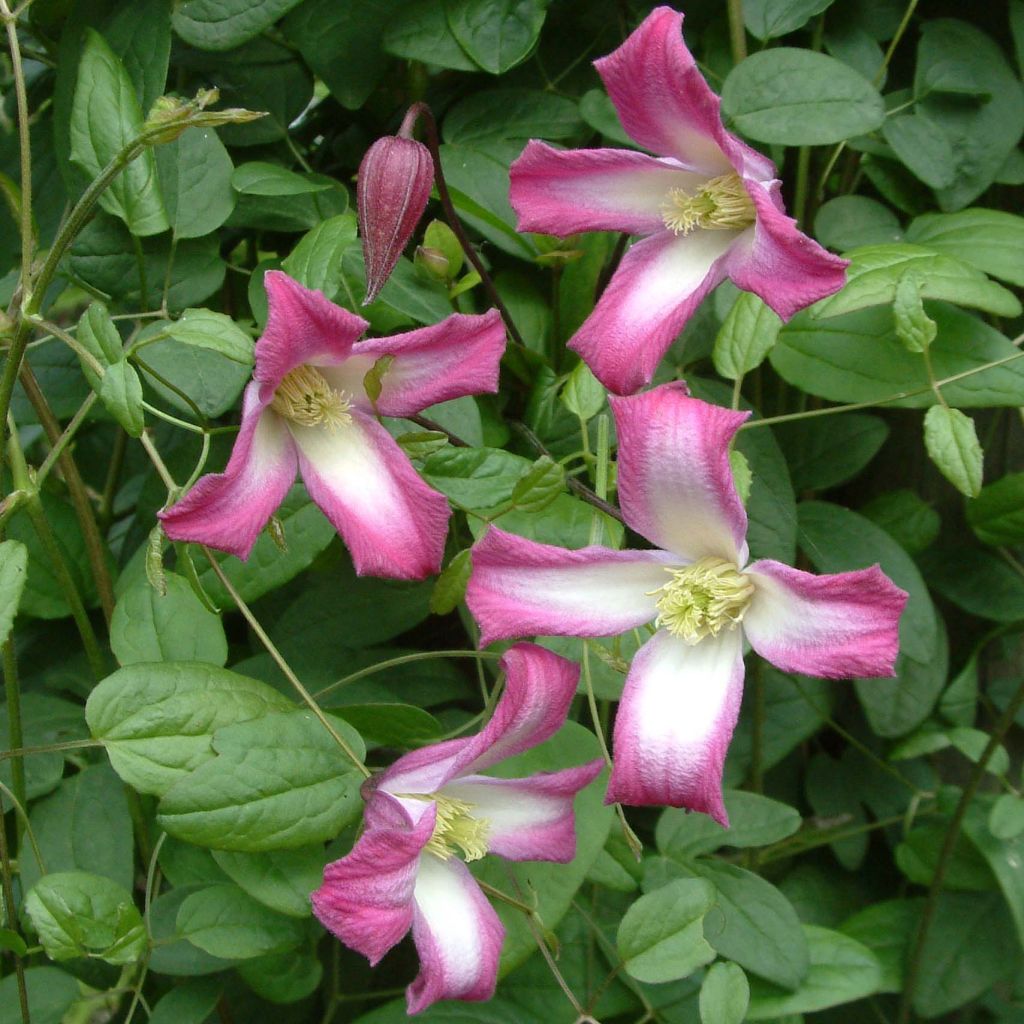

Clématite texensis Odoriba
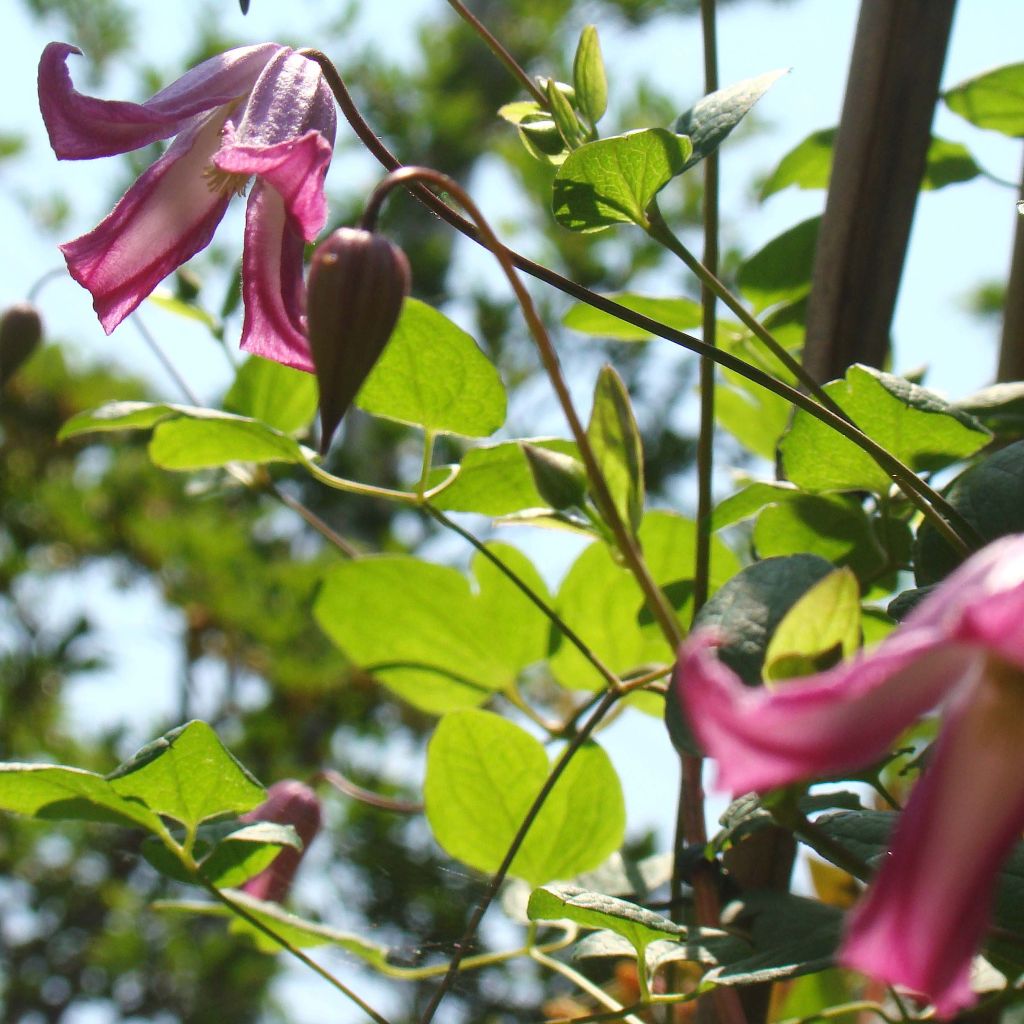

Clématite texensis Odoriba
Clematis x texensis Odoriba
Clematis x texensis Odoriba
Scarlet Clematis, Texas Clematis
Was planted in November 2019. Has taken well. Currently in bloom (spring 2020).
Brigitte, 21/05/2020
This item cannot be shipped to the selected country
Delivery charge from €5.90
More information
Delivery charge from €5.90
More information
Schedule delivery date,
and select date in basket
This plant carries a 6 months recovery warranty
More information
We guarantee the quality of our plants for a full growing cycle, and will replace at our expense any plant that fails to recover under normal climatic and planting conditions.
From €5.90 for pickup delivery and €6.90 for home delivery
Express home delivery from €8.90.
Does this plant fit my garden?
Set up your Plantfit profile →
Description
The Clematis texensis 'Odoriba' is a rarely offered Japanese variety, fairly recent, particularly floriferous during a long summer period. It blooms in summer with a good quantity of adorable flowers, shaped like small bells that slightly tilt towards the ground to be admired. They resemble precious little botanical tulips, with a very bright pink exterior, opening into a star shape when mature to reveal a white interior widely bordered with the same bright pink. This small vine, of rapid growth, is perfect for container cultivation, to cover a trellis or a fence within two seasons. It requires a sunny position and well-drained soil that remains moist in order to flower well.
The genus Clematis belongs to the family of ranunculaceae. 'Odoriba' is a horticultural variety dating back to 1990. It is the result of cross-breeding between Clematis crispa and C. viorna, both closely related to the species C. texensis, the Texan clematis. It belongs to the clematis that flower in summer on the current year's shoots. It is a woody perennial plant at the base, with annual herbaceous climbing stems that will reach 2.50 m (8ft) in height, with a spread of 1 m².
This clematis bears texensis-type flowers, small in size, measuring 4 to 5 cm (2in) in length, from June to September. The bisexual flowers are solitary or grouped in cymes. They emerge as small pink buds, barely longer than the tip of a finger. Then they elongate and open into a bell shape, swollen at the base, with a narrow neck, flaring into 4 star-shaped segments, with a rather fleshy texture. They have 4 tepals of a solid pink colour on the outside, showing a wide white median on the inside. They open widely into a star shape when mature, with a creamy yellow stamen heart on a white background. The flowering is followed by decorative feathery fruits of a somewhat silvery grey colour. The leaves are small, rounded, leathery, tripalmate, with irregularly incised edges. This clematis clings to the support or the host plant through petioles transformed into tendrils.
Plant your clematis together with your climbing roses to extend the flowering of your walls and pergolas until the end of summer. It is a genus rich in diversity, with varieties in all colours, shapes, and sizes. Take advantage of their ease of cultivation to give your garden a romantic and bohemian touch. 'Odoriba', thanks to its relatively small size, climbs and adorns the bushes with its bell-shaped flowers without harming them, similar to Sollya heterophylla with its small azure blue flowers. It will also thrive in a pot on a balcony or next to an entrance door to welcome visitors with its long-lasting flowering.
Clematis x texensis Odoriba in pictures
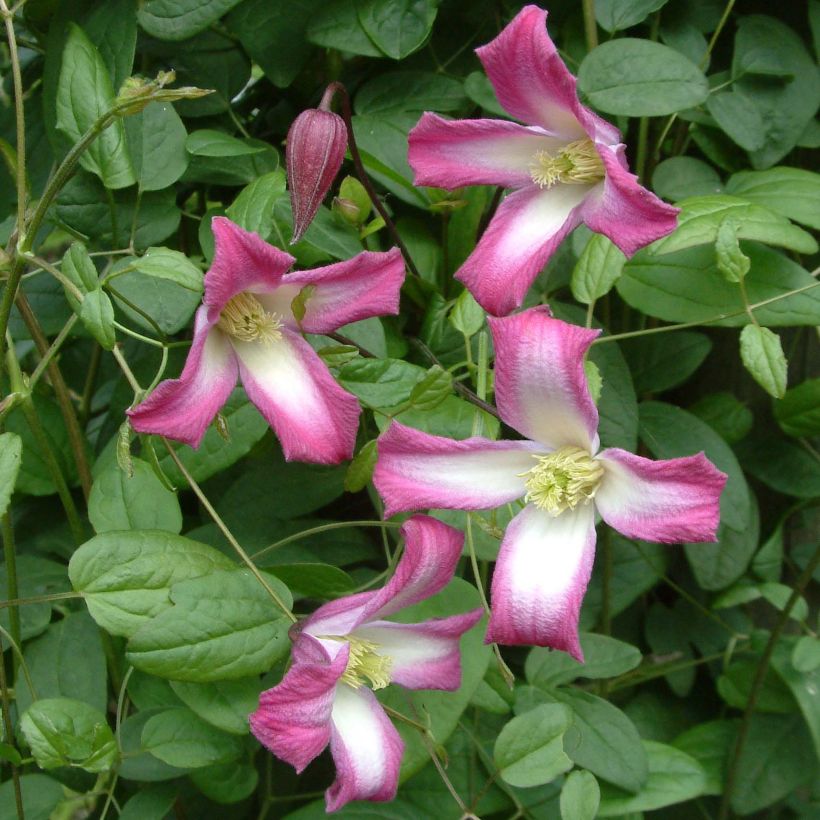

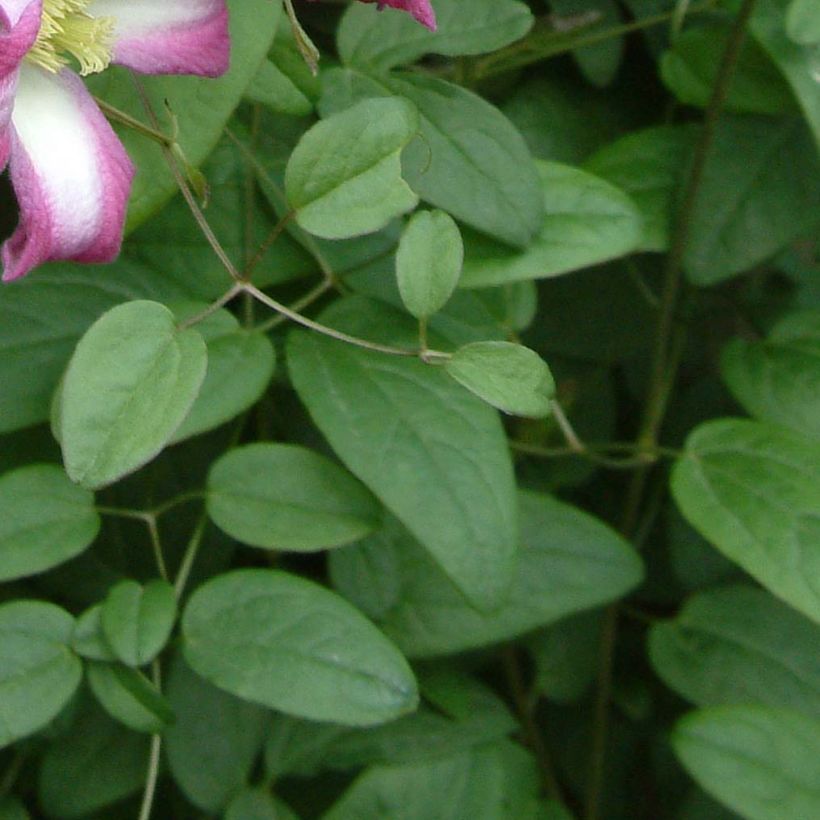

Plant habit
Flowering
Foliage
Botanical data
Clematis
x texensis
Odoriba
Ranunculaceae
Scarlet Clematis, Texas Clematis
Cultivar or hybrid
Other Clematis Texensis
Planting and care
Plant the 'Odoriba' clematis preferably in the sun, in a fertile, humus-rich, well-drained soil, shading the roots and the base of the stem (with a flat tile, for example). Herbaceous species prefer full sun and wilt in overly wet soil. Install your plant by covering the root ball with 3 cm (1in) of soil, in a soil worked to 20 cm (8in), lightened with good compost. During the first few weeks, water regularly but be careful of stagnant water, as it can cause collar rot. Cover the base of climbing clematis with a small mound of soil, reducing the risk of wilting while promoting vigorous shoots from the stump. After planting, prune the stems of deciduous climbing clematis to about 30 cm (12in) above a nice pair of buds. Mulch in February with garden compost or well-decomposed manure, avoiding direct contact with the stems. Train the stems, without squeezing them, until the plant can grip on its own. Clematis also like to grow freely on neighboring plants. This variety blooms on new growth in summer, so prune it in March to about 20 cm (8in) from the ground (slightly longer on older subjects), cutting cleanly above two large buds. Voles and grey worms can attack clematis and devour the stems. Aphids and greenhouse whiteflies are also potential parasites.
Planting period
Intended location
Care
Clematis
Haven't found what you were looking for?
Hardiness is the lowest winter temperature a plant can endure without suffering serious damage or even dying. However, hardiness is affected by location (a sheltered area, such as a patio), protection (winter cover) and soil type (hardiness is improved by well-drained soil).

Photo Sharing Terms & Conditions
In order to encourage gardeners to interact and share their experiences, Promesse de fleurs offers various media enabling content to be uploaded onto its Site - in particular via the ‘Photo sharing’ module.
The User agrees to refrain from:
- Posting any content that is illegal, prejudicial, insulting, racist, inciteful to hatred, revisionist, contrary to public decency, that infringes on privacy or on the privacy rights of third parties, in particular the publicity rights of persons and goods, intellectual property rights, or the right to privacy.
- Submitting content on behalf of a third party;
- Impersonate the identity of a third party and/or publish any personal information about a third party;
In general, the User undertakes to refrain from any unethical behaviour.
All Content (in particular text, comments, files, images, photos, videos, creative works, etc.), which may be subject to property or intellectual property rights, image or other private rights, shall remain the property of the User, subject to the limited rights granted by the terms of the licence granted by Promesse de fleurs as stated below. Users are at liberty to publish or not to publish such Content on the Site, notably via the ‘Photo Sharing’ facility, and accept that this Content shall be made public and freely accessible, notably on the Internet.
Users further acknowledge, undertake to have ,and guarantee that they hold all necessary rights and permissions to publish such material on the Site, in particular with regard to the legislation in force pertaining to any privacy, property, intellectual property, image, or contractual rights, or rights of any other nature. By publishing such Content on the Site, Users acknowledge accepting full liability as publishers of the Content within the meaning of the law, and grant Promesse de fleurs, free of charge, an inclusive, worldwide licence for the said Content for the entire duration of its publication, including all reproduction, representation, up/downloading, displaying, performing, transmission, and storage rights.
Users also grant permission for their name to be linked to the Content and accept that this link may not always be made available.
By engaging in posting material, Users consent to their Content becoming automatically accessible on the Internet, in particular on other sites and/or blogs and/or web pages of the Promesse de fleurs site, including in particular social pages and the Promesse de fleurs catalogue.
Users may secure the removal of entrusted content free of charge by issuing a simple request via our contact form.

































